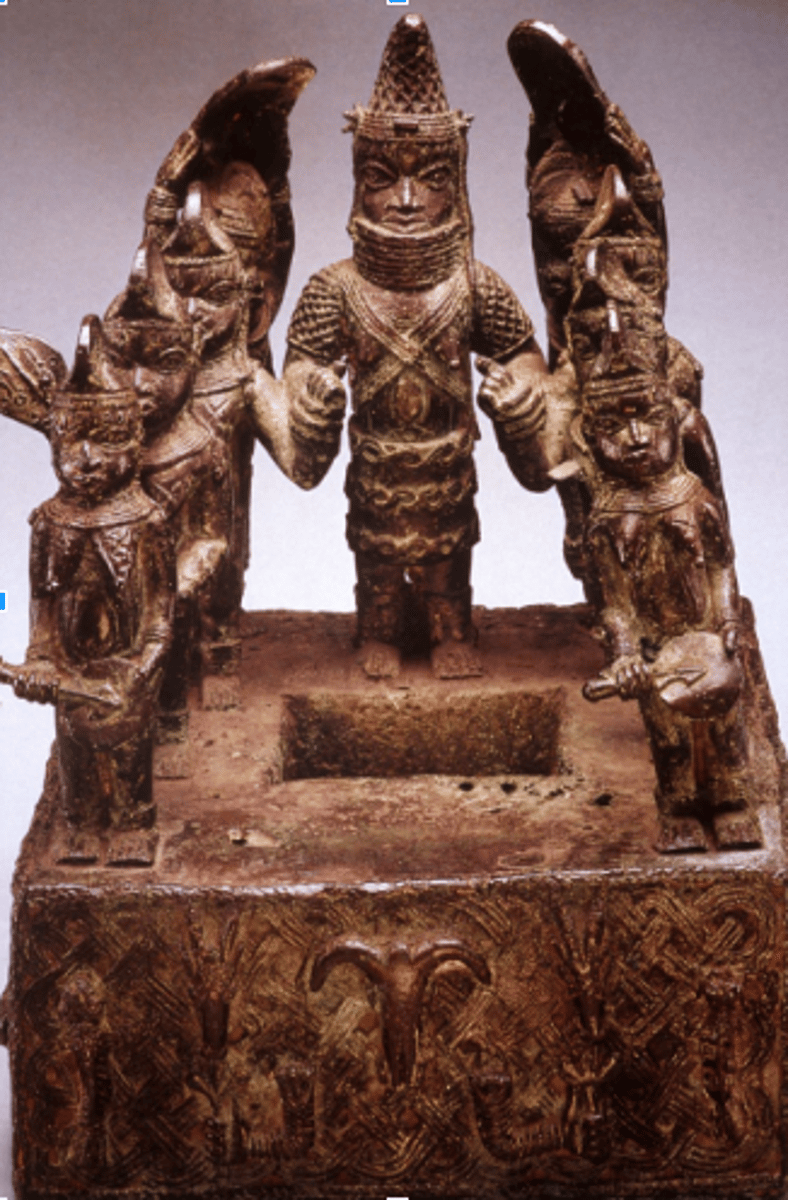Kingdom of Benin/ Art of the Benin Kingdom
1/16
There's no tags or description
Looks like no tags are added yet.
Name | Mastery | Learn | Test | Matching | Spaced |
|---|
No study sessions yet.
17 Terms
Photograph of oba in regalia
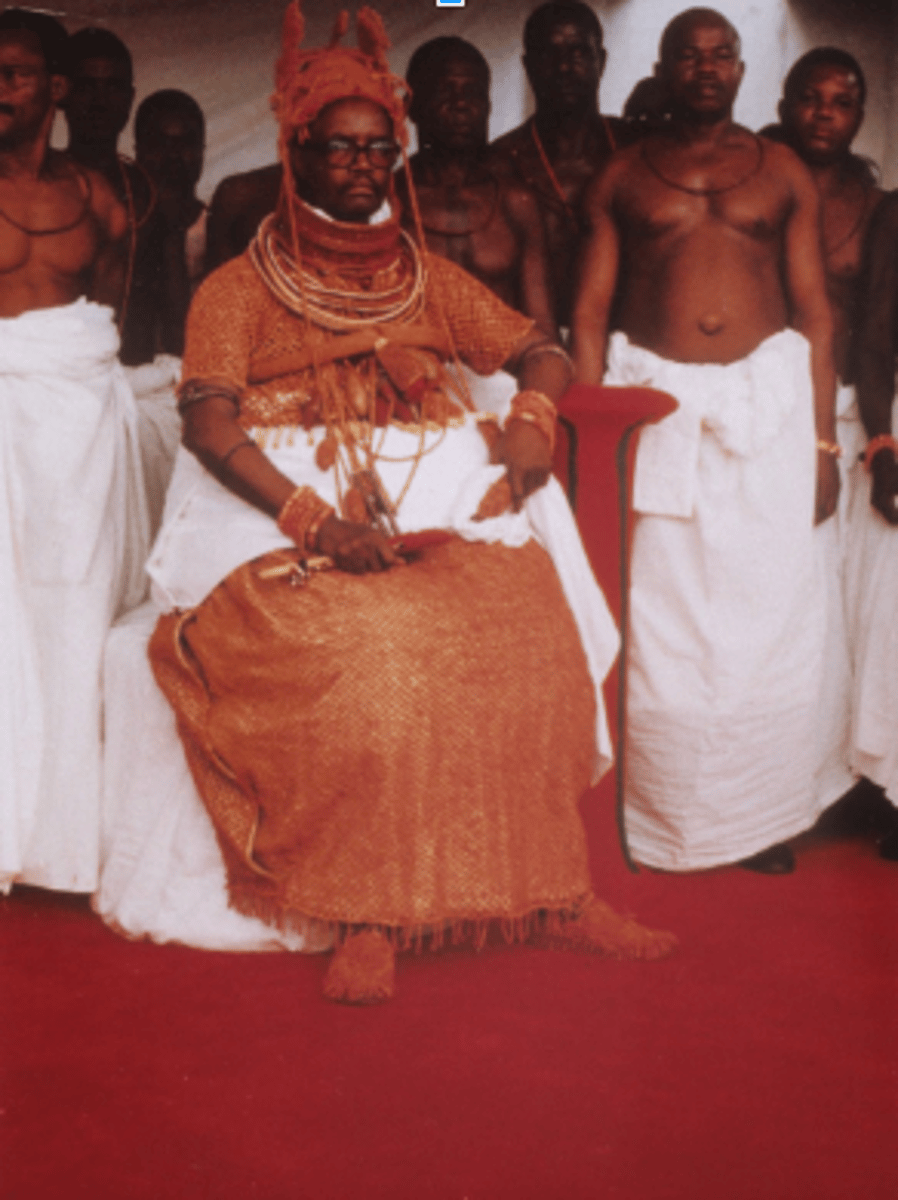
Members of the British Punitive Expedition in the Benin Palace with the Treasury of Royal Ivory, brass, and other arts, which were moved to London. 1897
- British wanted to visit Benin when the king was offering sacrifices to ancestors
- city warriors ambushed and killed him and most of his party
- British navy retaliated and saw human sacrifices happening when they entered the city
- burned much of the palace and city, exiled the king, and removed thousands of art objects that were sent to Europe
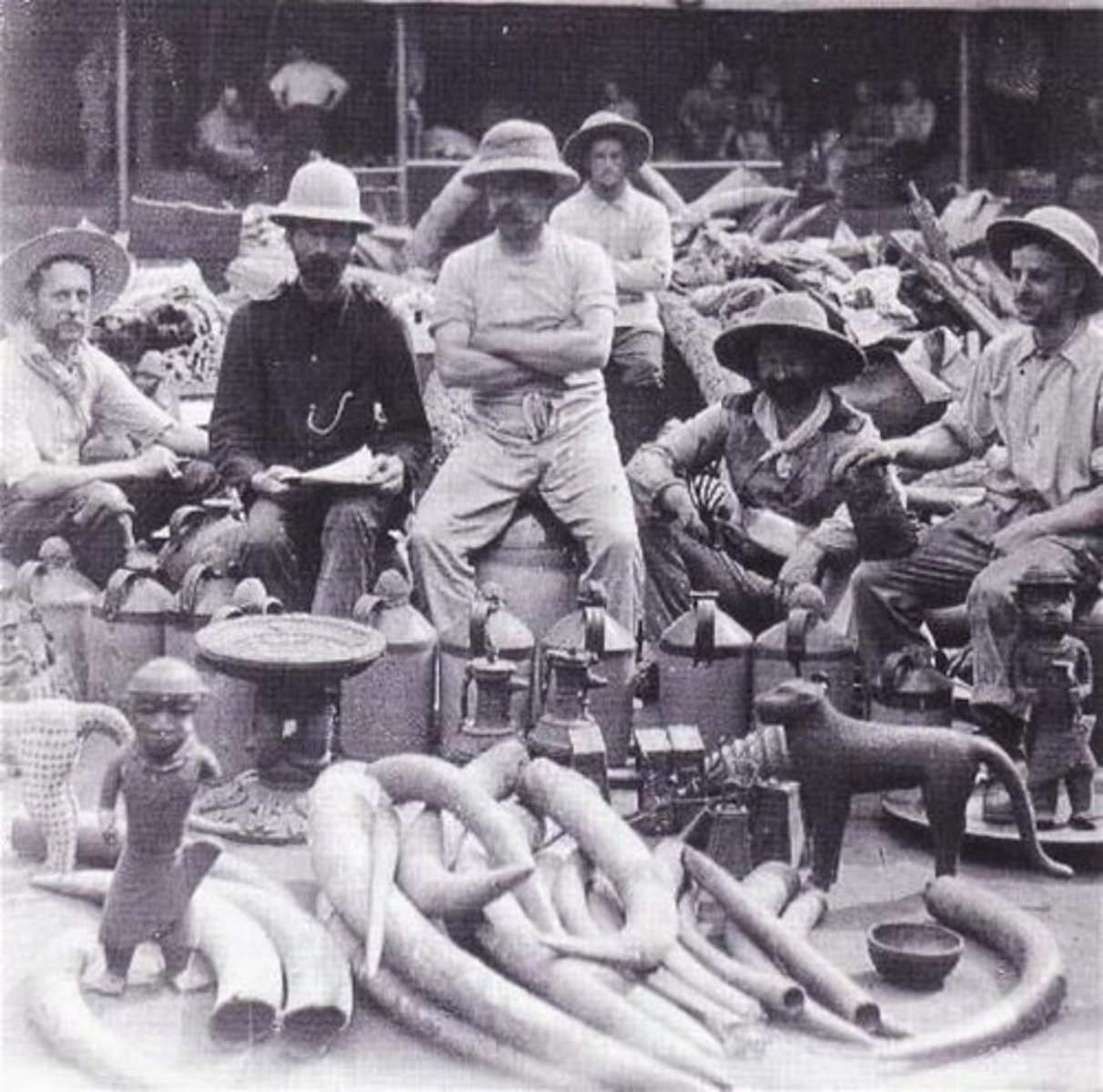
Bronze/Brass Plaques, 16th-17th C
-
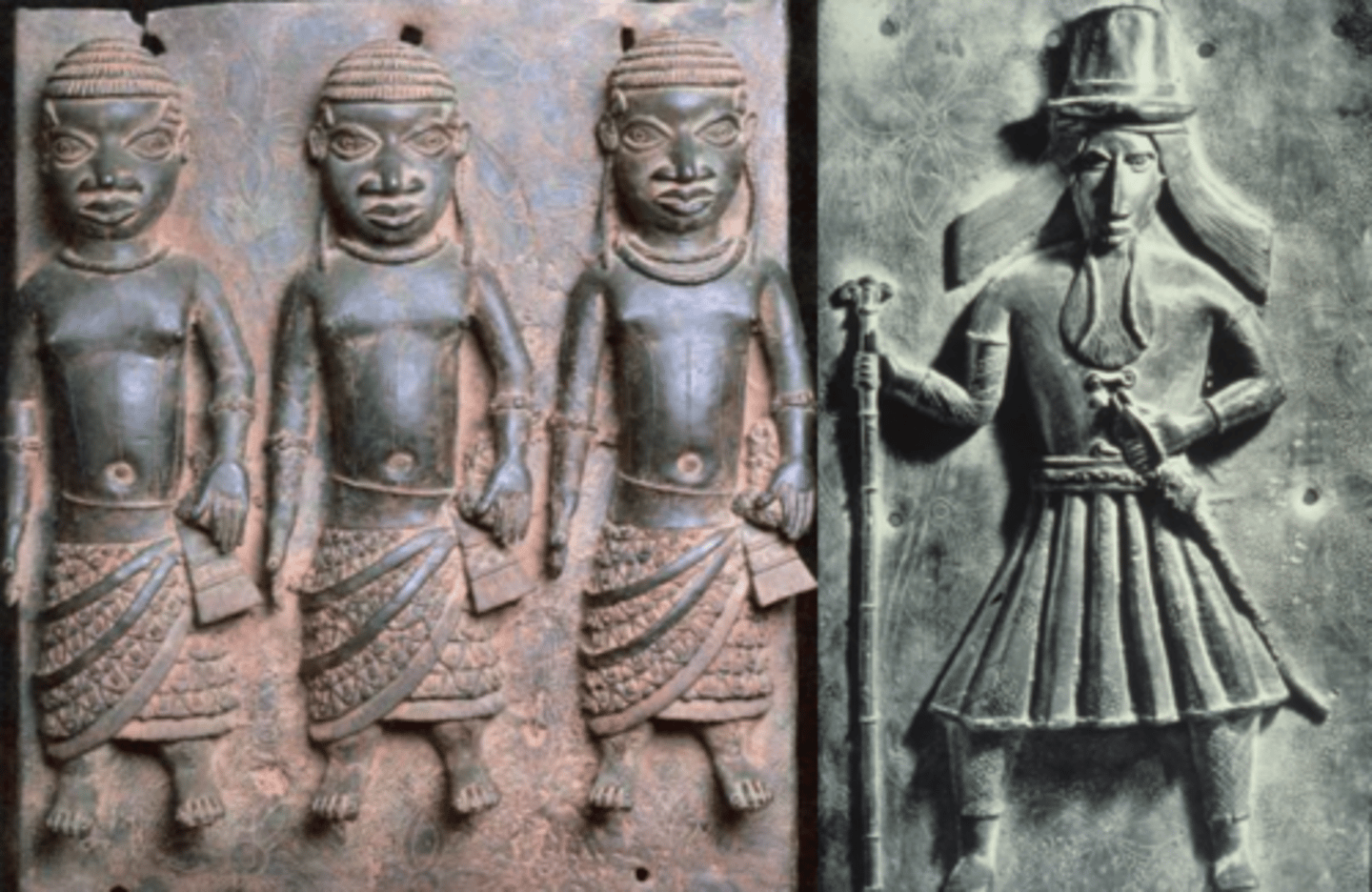
Plaque depicting architectural façade and figures
- Benin, 16th-17th century
- Bronze
- the palace turrets, vertical transition points where the terrestrial realm touches the celestial, are pyramidal, a stable form that evokes the mass of the oba in his ceremonial regalia
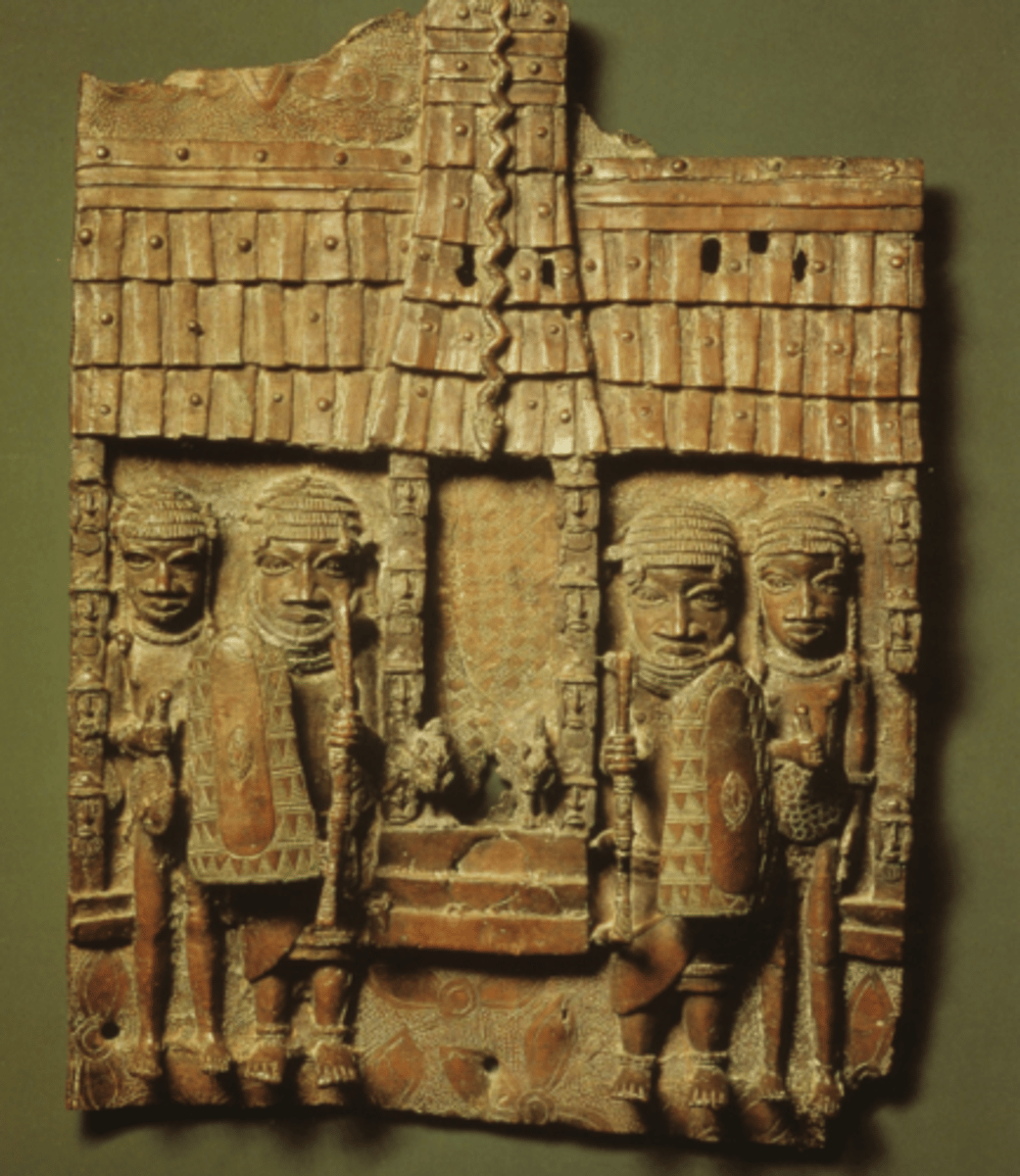
Plaque showing a warrior and attendants
- Benin, Nigeria, 17th century
- Bronze
- Hierarchical proportion
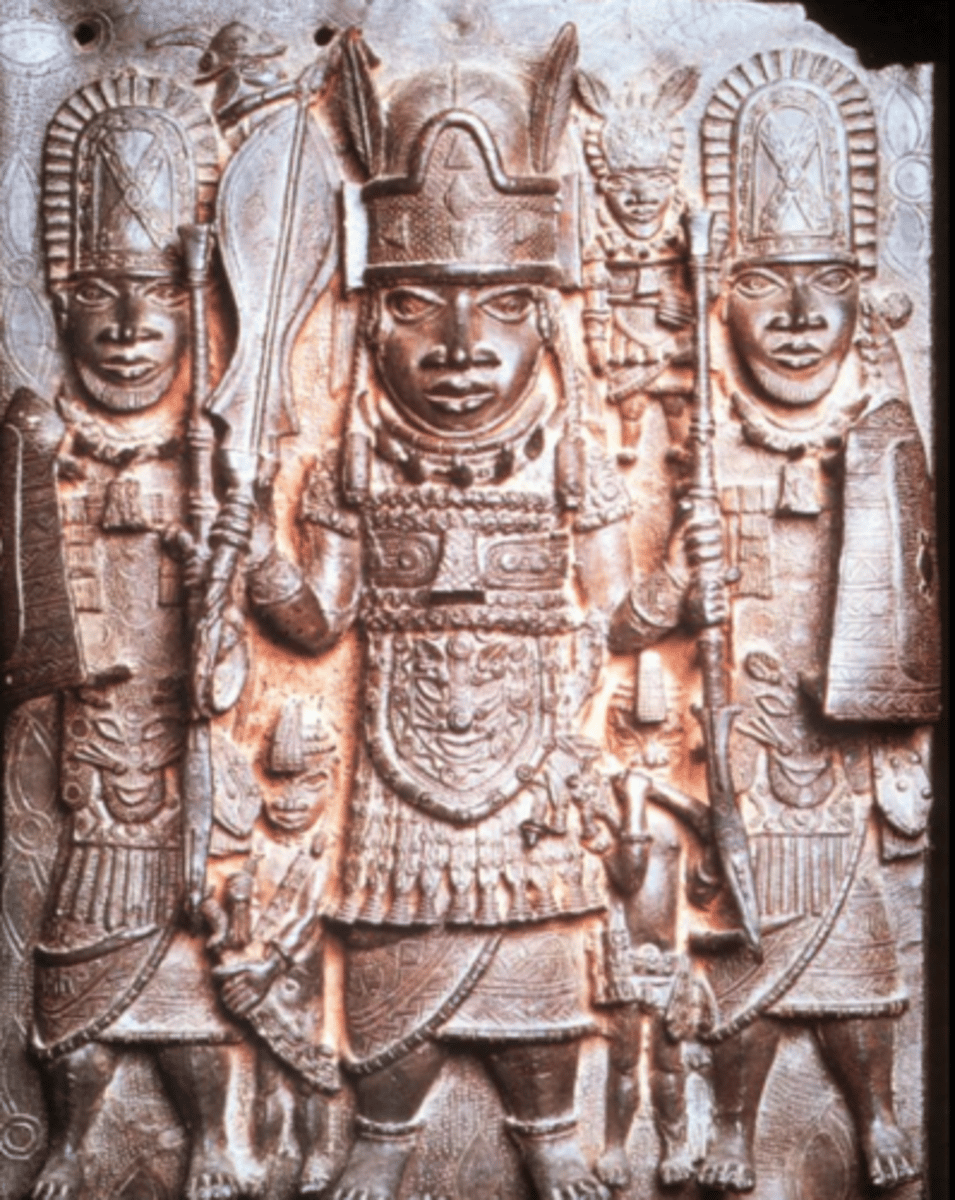
Plaque depicting an Oba with mudfish legs
- Benin 1th-17th century
- Bronze
- portrays the king in a mystical, spiritual aspect
- grasping docile leopards and holding them in a heraldic pose - reference to authority as the only person in the kingdom who can take human life or the taking of it
- fish symbolize identification with Olokun, who's realm is water
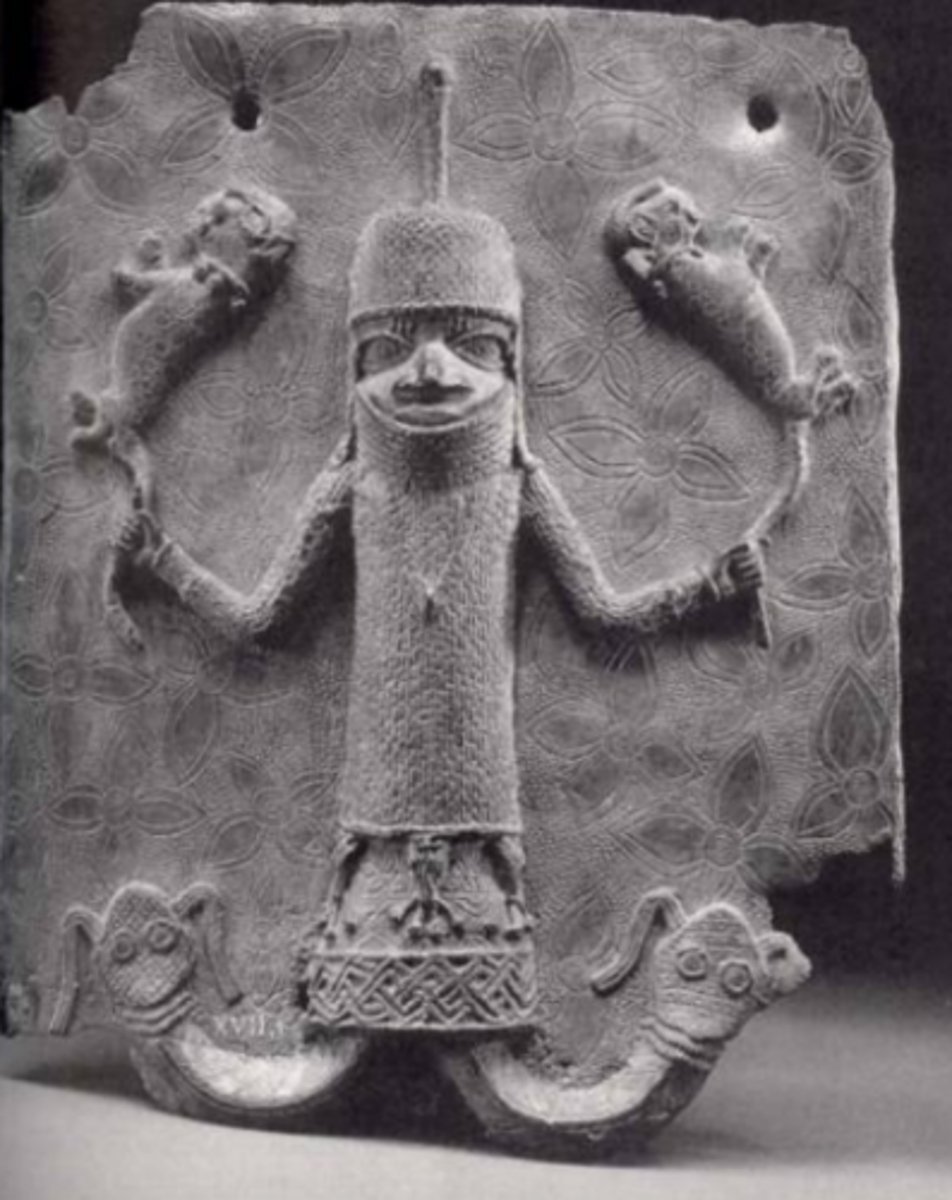
Plaque showing two men swinging on ropes
- Benin, Nigeria, 16th century
- Bronze
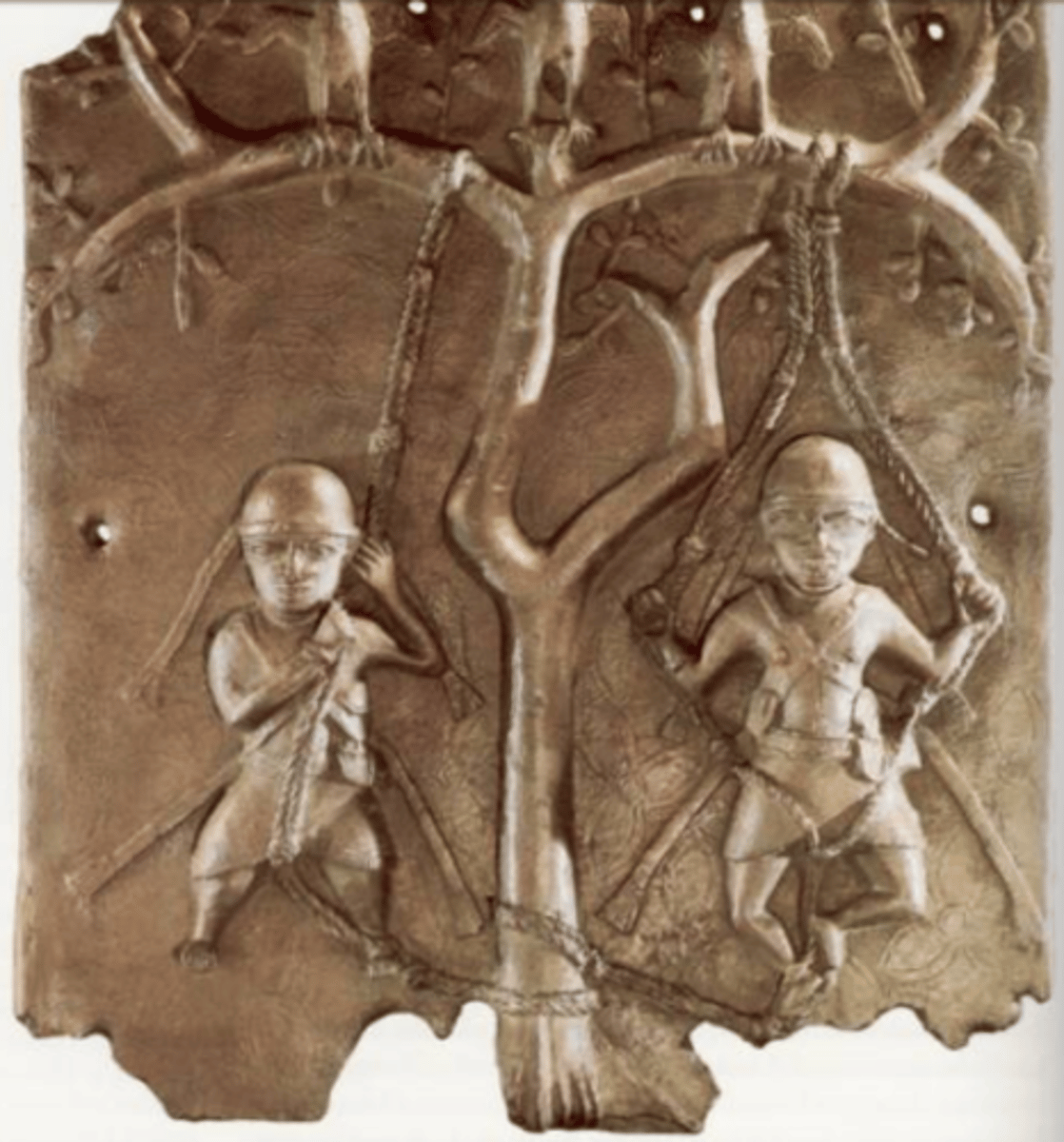
Sculpture of a Portuguese soldier, 16th C
- Benin, Copper alloy
- stood on a royal alter
- holds a matchlock at the ready
- alert stance, give a dynamic position, shown with neutrality --> no caricature
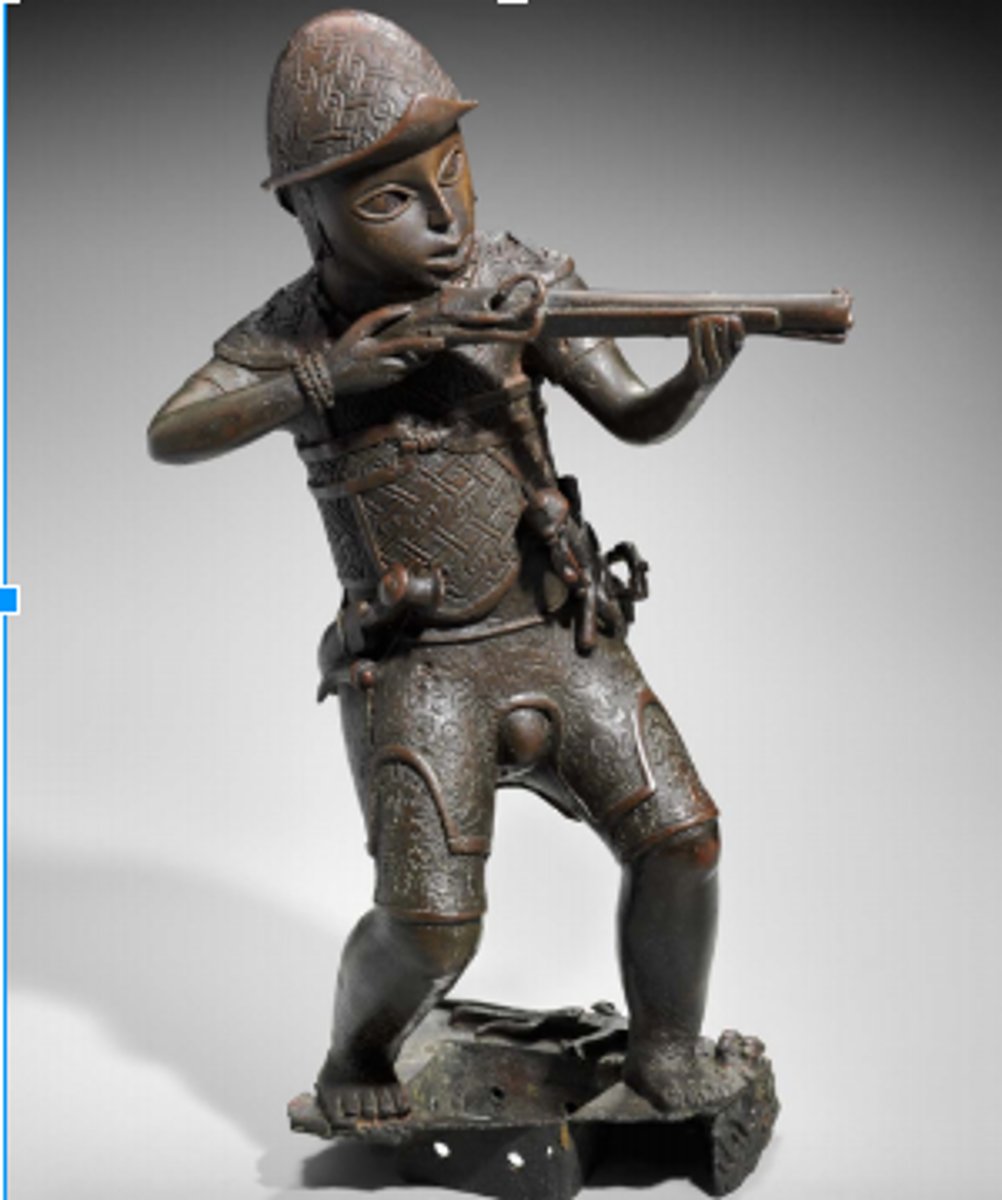
Benin Palace Ancestral Shrine, 20th C
- For King Eweka II
- Photograph by Eliot Elisofon, 1970
- focus attention inwards
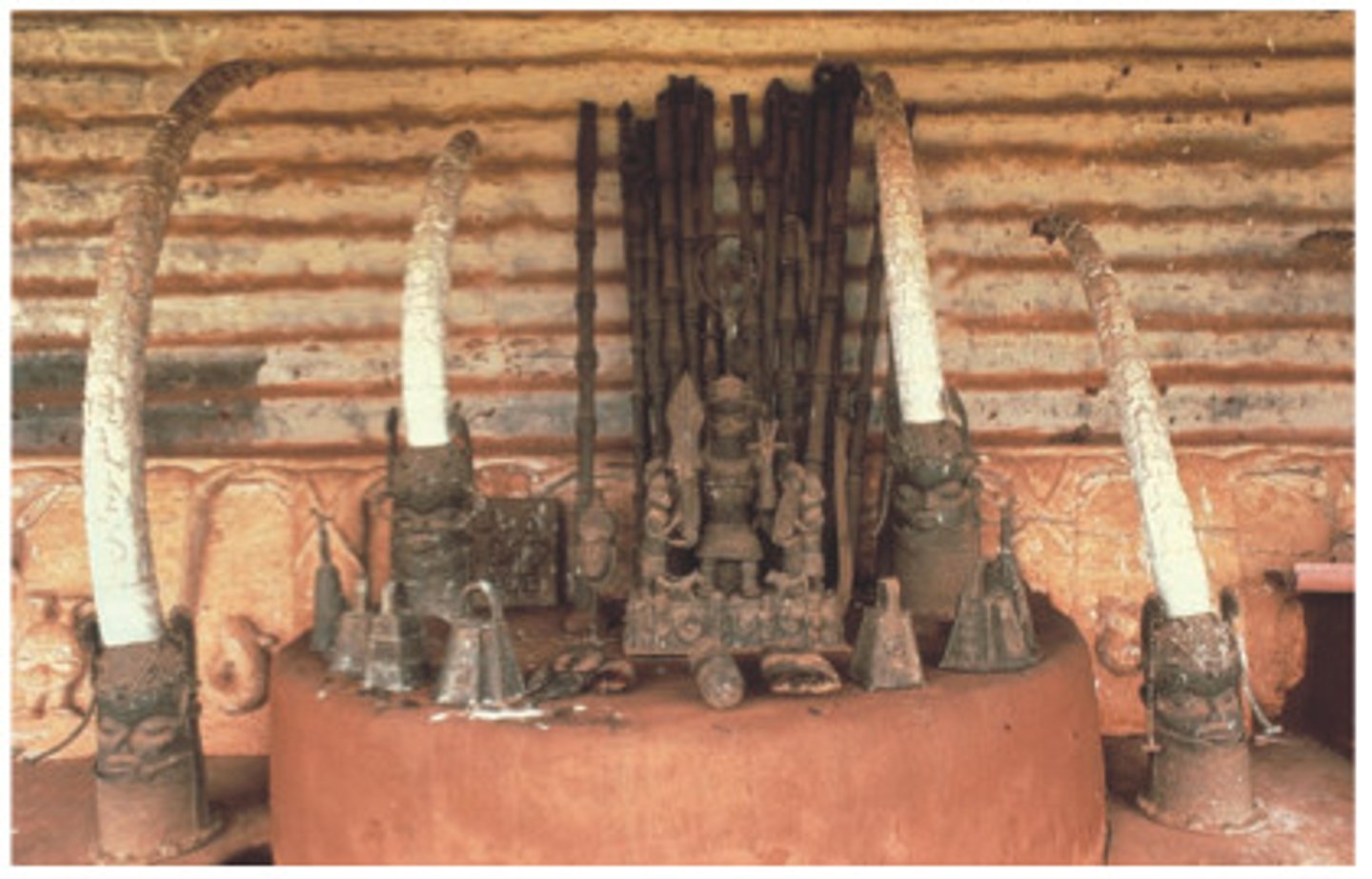
Head from a royal altar
- Benin Kingdom, Early period, 15th-16th C
- Thinnest casting, Most naturalistic
- Not realistic for imitative portraits, but sensitively modeled
- Beaded necklaces conform with the neck
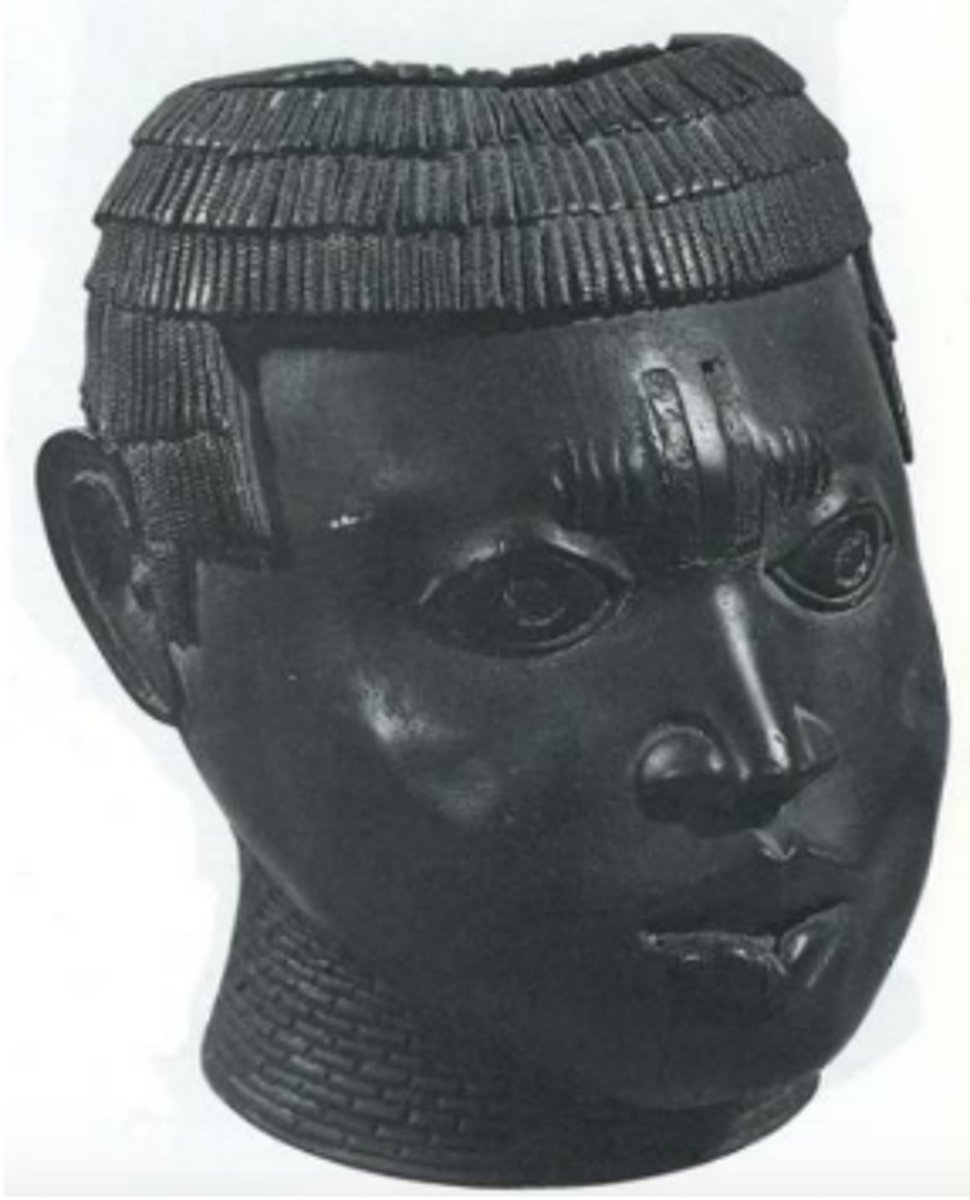
Head of an Oba, Benin Kingdom, Early Period, 15-16th C
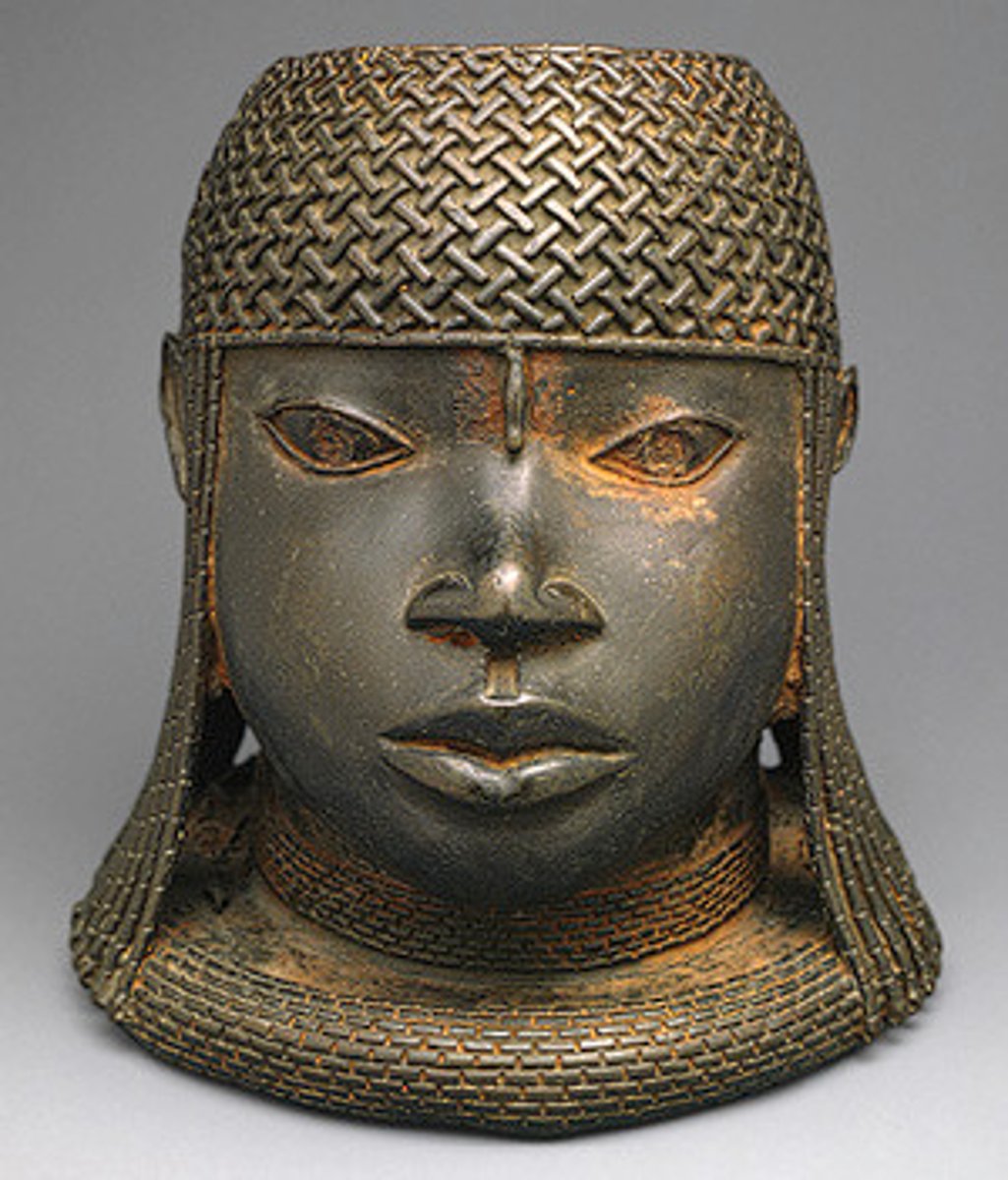
Head of an Oba, Benin Kingdom, Middle period. 17th-18th C
- Heavier, bulkier, and taller than before - meant to support ivory tusks
- Beaded necklaces form a cylinder from which the head seems to emerge
- Facial features are larger and more conventionalized
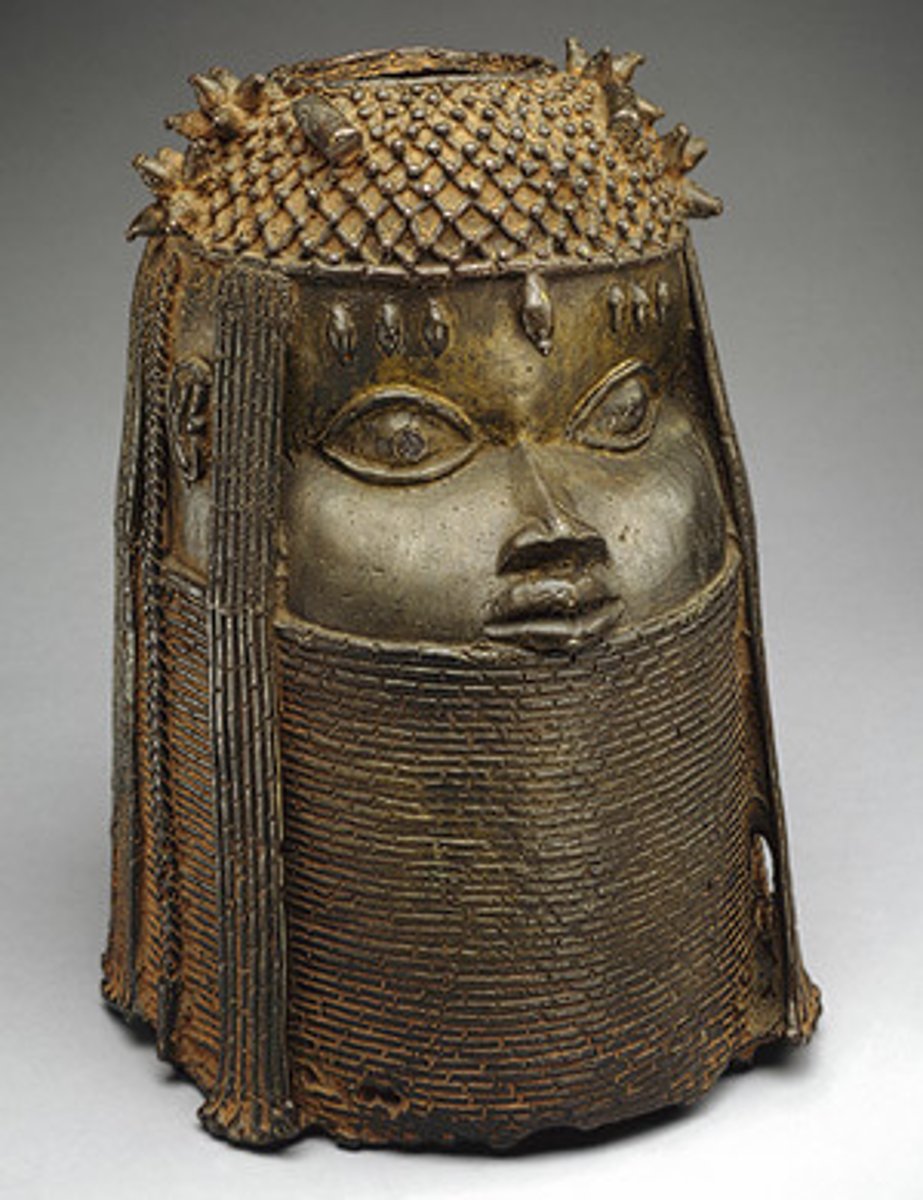
Head of an Oba, Benin Kingdom, Late period, 18th-19th C
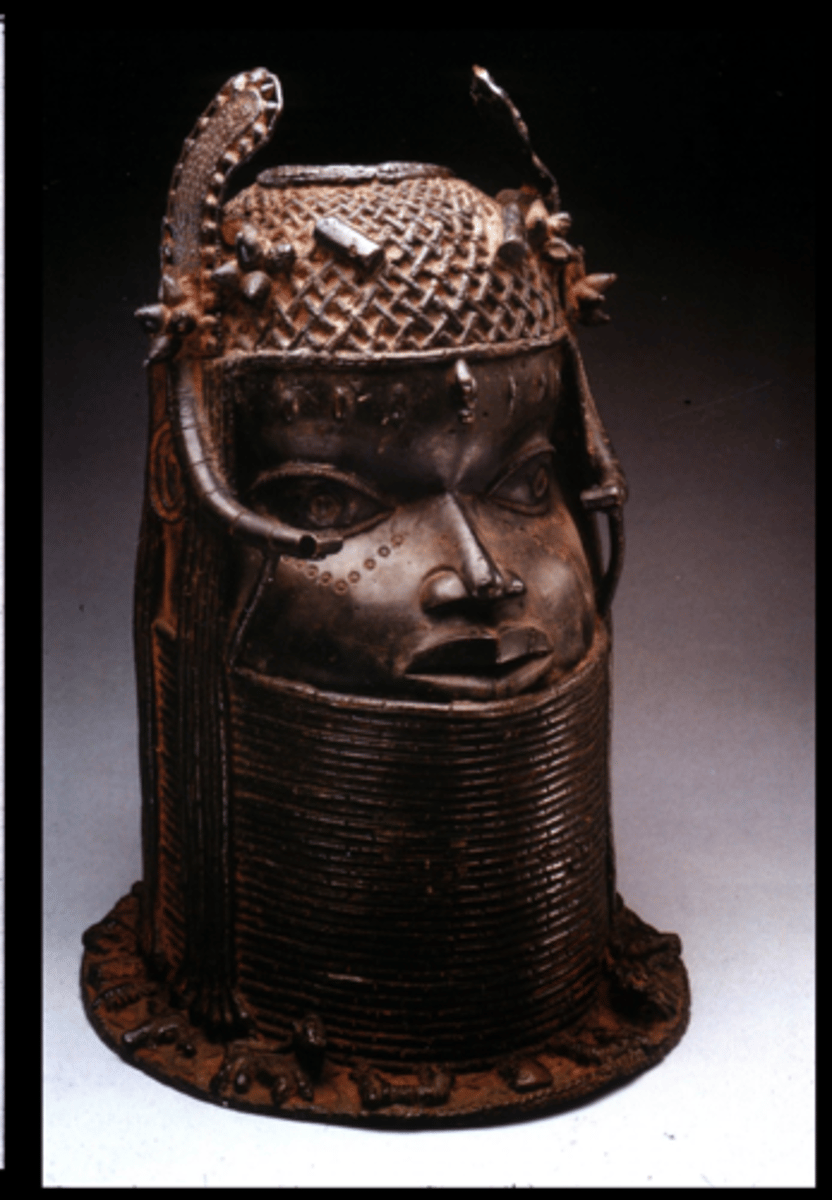
Memorial head of the iyoba or "queen mother," Early 16th C
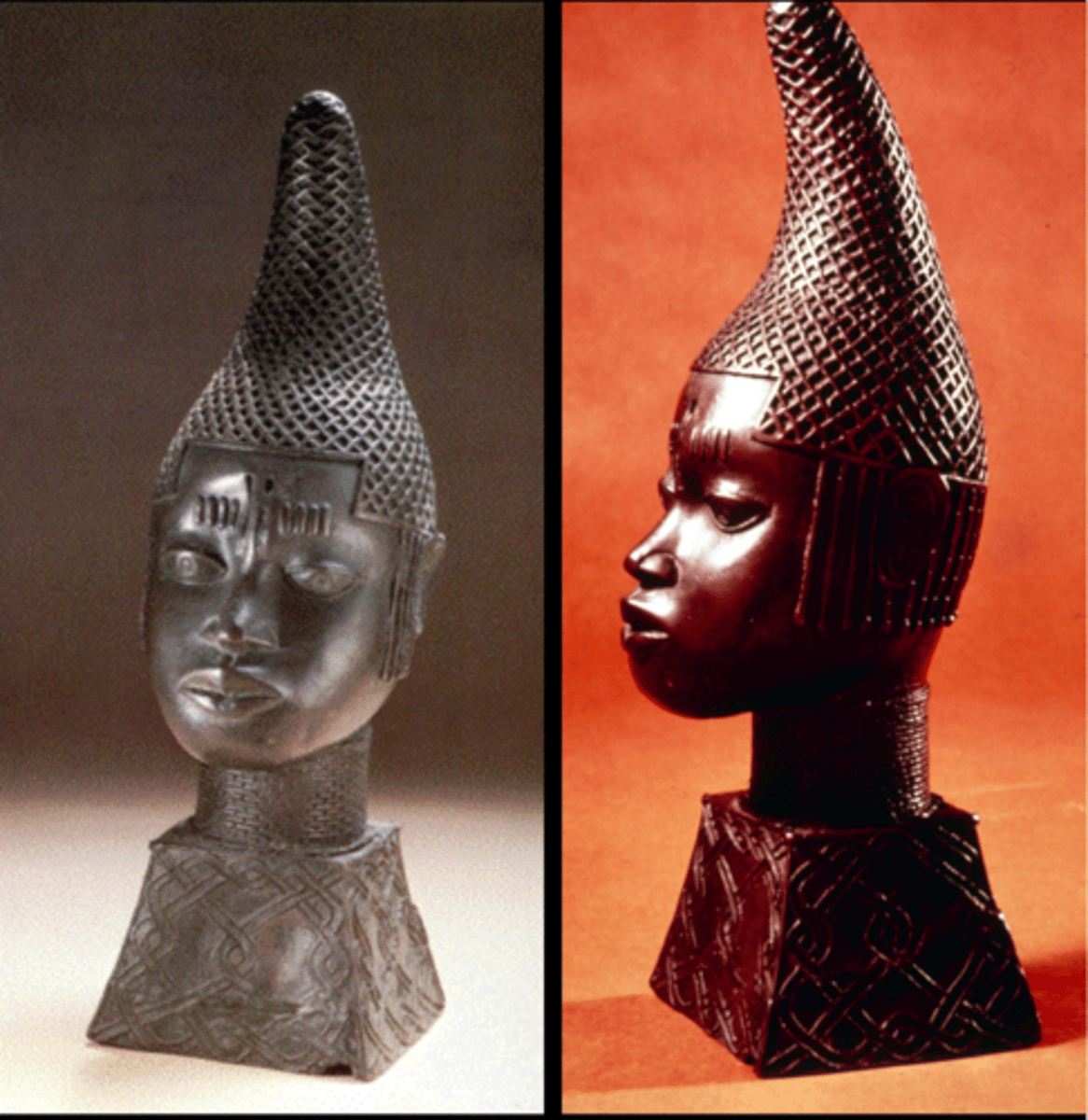
Head of a queen mother, Late Period, 18th-19th C
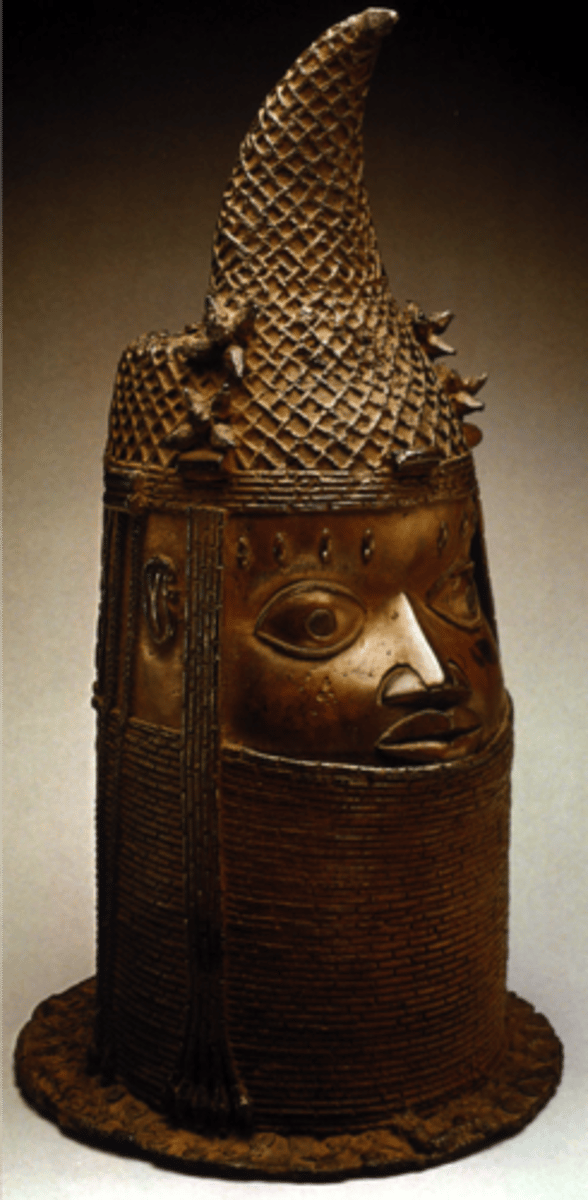
Waist pendant depicting a Queen Mother (Idia), 1550 CE, ivory and iron
- Meant to represent Idia, wife of oba Ozolua and mother of oba Esigie
- Suspended from the waist or chest of the king
- Exact meaning unknown - protective? Identified the king with certain powers (queen mothers supernatural powers)? Wealth and beauty?
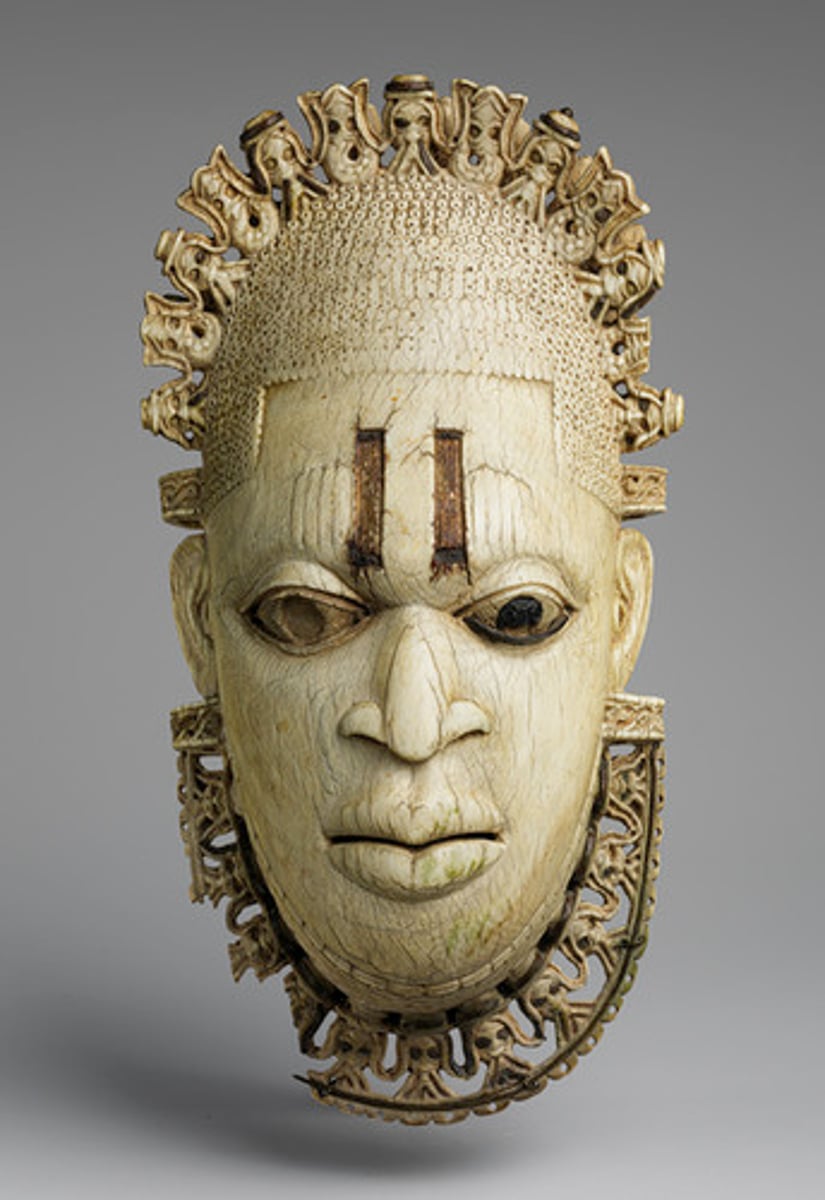
Sculptures depicting the Queen Mother, 18th C
